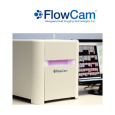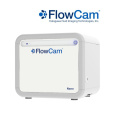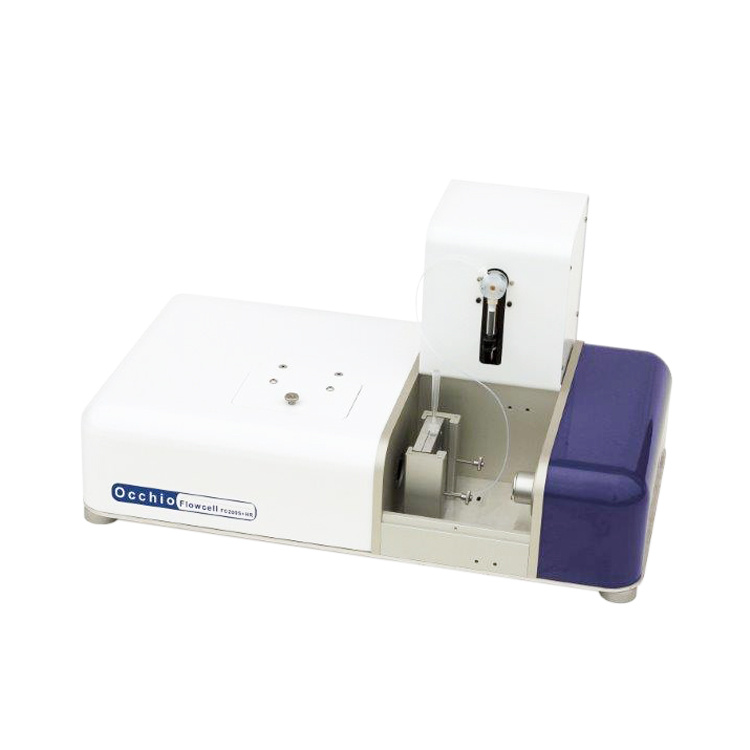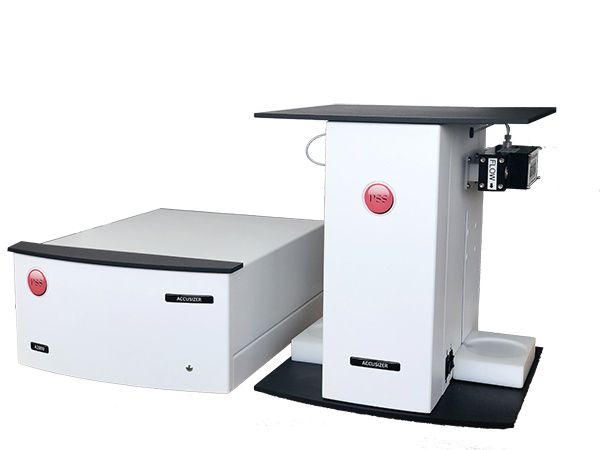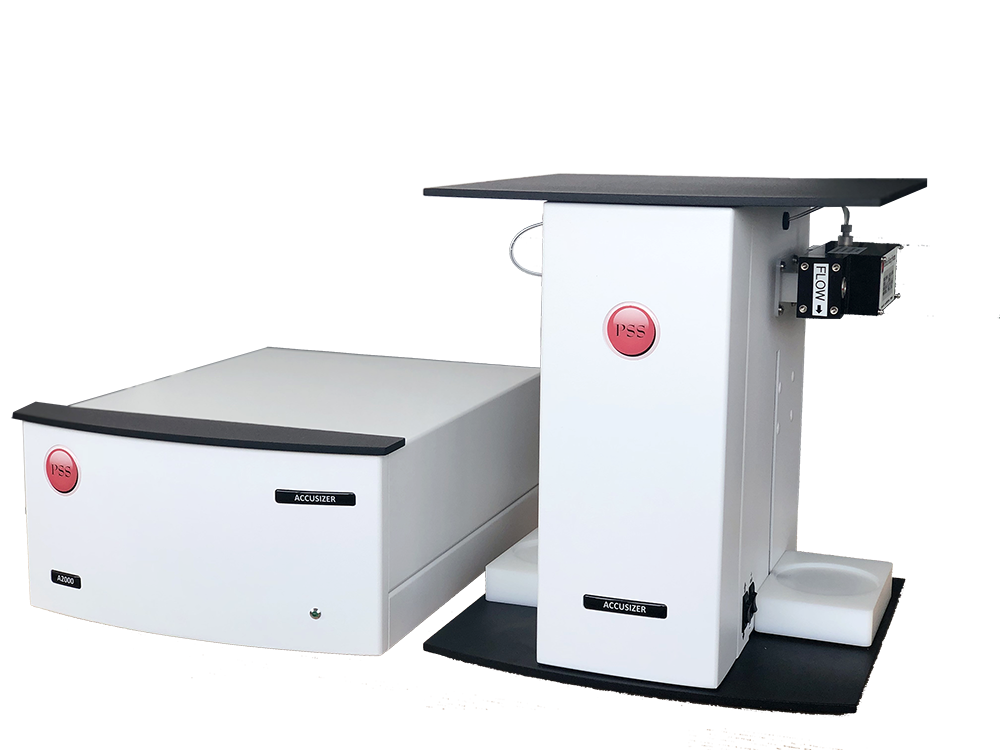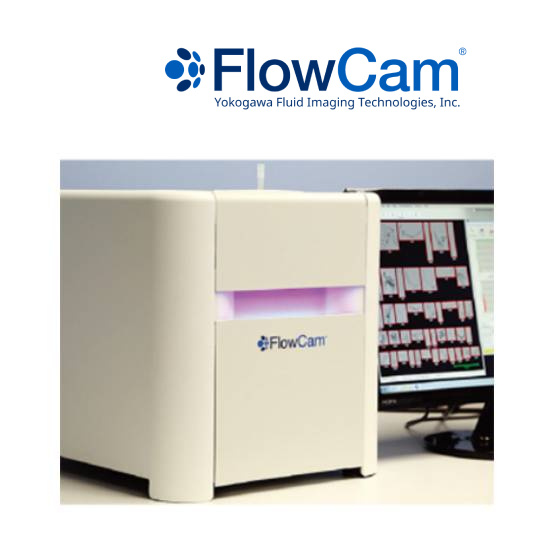
方案详情
文
Dan Berdovich(Micro Measurement Laboratories)了解他客户的注射剂样品中有蛋白质聚集体,但尽管有各种各样的高科技仪器可供他使用,但他仍然无法完全确信他能看到它们或获得精确计数。
对于颗粒分析的权威机构,他们获得了关于注射药物产品目视检查标准的同行评审论文奖。 然而,虽然在工业市场中,使用颗粒成像技术的应用不到十年,但是Berdovich仍努力解决客户的问题以至他自己的业务获得成功。
方案详情

DKSH Contract Lab Using Flow Imaging Microscopy toCharacterize Protein Aggregates 检测机构使用流动成像显微镜来表征蛋白质聚集体 Posted by Joyce Brown Joyce Brown发表 Dan Berdovich knew there were proteinaggregates in his customer's parenteral sample butdespite an assortment of high-tech instrumentation athis disposal, he couldn’t be completely confident hewas seeing them all or getting a precise count. Dan Berdovich (Micro Measurement Laboratories) 了解他客户的注射剂样品中有蛋 白质聚集体,但尽管有各种各样的高科技仪器可供他使用,但他仍然无法完全确信他能看到它们或获得精确计数。 For an authority on particle analysis who’d earned an award for a peer-reviewed paper on visualinspection standards of injectable drug products, it was disconcerting. Using imaging particleanalysis, however, a technology available to industrial markets for less than a decade, Berdovich'sefforts to solve his customers' problems led to his own business success. 对于颗粒分析的权威机构,他们获得了关于注射药物产品目视检查标准的同行评审论文奖。然而,虽然在工业市场中,使用颗粒成像技术的应用不到十年,但是 Berdovich 仍努力解决客户的问题以至他自己的业务获得成功。 His company,Wheeling, II.-based contract laboratory Micro Measurement Laboratories, Inc., doesparticulate matter testing, particle identification, method validation and visual inspection standardsdevelopment for pharmaceutical and biotechnology companies world wide, among other services. 他的公司位于伊利诺伊州惠灵的实验室 Micro Measurement Laboratories, Inc。 为世界各地的制药和生物技术公司以及其他公司进行颗粒物测试,颗粒识别,方法验证和视觉检测标准开发。 The company offers particular expertise in standards and recommendations set by the U.S.Pharmacopeial Convention (USP), including USP <787>, which covers the testing of sub-visibleparticulate matter in therapeutic protein injections; USP <788>, which covers testing for andreporting of sub-visible particulate matter in injections and parenteral infusions; and theforthcoming USP <790>, which covers the inspection of visible particulates in injectable drugproducts; along with the revisions USP <1787>,<1788> and <1790>. 该公司在美国药典委员会 USP 制定的标准和建议方面提供了多项专业知识,包括 USP<787>,其中包括治疗性蛋白质注射中亚可见颗粒物的测试; USP <788>,包括注射和肠胃外制剂中的亚可见颗粒物的测试和报告;以及即将出版的 USP <790>, 其中包括检查注射药品中的可见微粒;以及 USP <1787>,<1788>和<1790>的修订版。 “I was getting very frustrated that when it came to sub-visible or semi-transparent particles likeproteins, we were essentially in the dark," says Berdovich,“and USP <788> is our bread andbutter.” “我非常沮丧的是,,当遇到像蛋白质这样的亚可见或半透明颗粒时,我们基本上处于黑暗中,”Berdovich 说, “USP <788>是我们的面包和黄油。99 Why it hurt 为什么会沮丧 Berdovich's team used light obscuration instruments to detecting protein aggregates and otherparticles, as prescribed in USP <788>. The problem, he realized, was that light typically travelsthrough the particles without being scattered. Proteins and protein aggregates, along with othertranslucent and transparent particles, often defy detection by even the finest light obscurationdevices, especially when in the sub-visible range of less than 20 um. Additionally, much largerparticles are often severely undersized when measured, if detected at all. Berdovich 的团队使用光阻法仪检测蛋白质聚集体和其他颗粒,如 USP <788>所述。他意识到,问题在于光线通常直接穿过透明颗粒而不会产生散射现象。蛋白质和蛋白质聚集体以及其他半透明和透明的颗粒,即使是最好的光阻法装置也经常无法检测,特别是在小于20微米的亚可见光范围内。另外,如果检测到更大的颗粒时,通常测量尺寸会小于实际尺寸。 Characterizing protein aggregates is even more challenging using manual visual inspection-looking at individual vials under controlled lighting conditions and determining whether visibleparticles are present using the naked eye.This method has limitations similar to those using lightobscuration, and because it is inherently subjective, it can yield unreliable results, especially insome biologics and lyophilized drugs. 使用手动目视检查表征蛋白质聚集体更具挑战性-在受控光照条件下观察单个样品瓶,并使用肉眼确定是否存在可见颗粒。该方法具有类似于使用光阻法的局限性,并且因为其本质上是主观的,它可以产生不可靠的结果,尤其是在一些生物制剂和冻干药物中。 At present, 100% visual inspection is required for visible particulates and two methods, lightobscuration and membrane microscopy, are accepted by USP to test for the presence of sub-visible particles in parenteral formulations. 目前,可见颗粒需要100%目视检查, USP 接受两种方法, E即光阻法和膜显微镜法来测试肠胃外制剂中亚可见颗粒的存在。 Since most manufacturers aim primarily for compliance, there is little incentive to learn more aboutthe formation or introduction of particles present in compliant formulations. For example, underUSP <788>, sub-visible particle testing is typically done in a lab away from the line where visualinspections are conducted for visible particles. Vials may be rejected from either test, but are notoften evaluated together using orthogonal methods to determine what particles are triggering therejections. Concern is focused on effectively rejecting off-spec vials rather than on identifying thetype of particle detected and understanding why it is present. 由于大多数制造商主要致力于合规性,因此几乎没有动力去了解合规配方中存在的颗粒的形成或引入。例如,在 USP <788>中,亚可见颗粒测试通常在远离目视检测可见颗粒的实验室中进行。他们可以从任一测试中判定样品不合格,但是通常忽略使用正交 方法一起评估样品以确定哪些颗粒触发不可接受条件。他们关注的重点往往是是如何有效地拒绝不合格的样品,而不是确定检测到的颗粒类型并理解其存在的原因。 The situation faced 面临的情况 According to Berdovich, this mind set is changing.“Most of my customers want to know moreabout their products than compliance requires, such as particle shape - it's invaluable in caseproblems arise later in formulation- but you can't find out much more if you’re using laser scatteror light obscuration devices," he says. 根据 Berdovich 的说法,,‘ 客户的这种心态正在发生变化。“我的大多数客户都希望了解他们的产品,而不仅是合规要求,例如颗粒形状-如果在配方中出现问题,这是非常宝贵的-但如果您使用激光散射法或光阻法,您就无法获得更多的颗粒信息“他说。 The problem came to a head during another test that required measuring particles in a liquid or gelformed on a membrane. Since the particle shape deformed in minutes, the analysis need ed to bedone quickly. Manual micros copy proved far too slow. Moreover, the particles deformed whenfiltered and squeezed between the glass slides.“We were bumping up against a wall and thoughtthere was no way to do this," says Berdovich. 在另一个需要在过滤膜上测量所形成的液体或凝胶中的颗粒的检测方法中,又一个问题出现了。由于颗粒形状在可以在极短时间内产生变形,因此需要快速完成分析。手动微拷贝太慢了。此外,颗粒在过滤并在载玻片之间挤压时变形。“我们碰到了一堵墙,并认为没有办法做到这一点,” Berdovich 说。 Then he read in a trade magazine about new instrumentation called the FlowCAMQ, an imagingparticle analysis system that automatically detects the presence of particles and microorganisms ina sample, including transparent, semi transparent and sub-visible particles. 然后他在一本行业杂志上阅读了一种名为FlowCAMQ的新仪器,这是一种颗粒成像分析系统,,可自动检测样品中颗粒和微生物的存在,包括透明,9斗半透明和亚可见颗粒。 The instrument's software package does typical spreadsheet analysis operations on particle datawhile presenting the results visually as images- as opposed to tabular representation.Itincorporates statistical pattern recognition for particle characterization, a big improvement oversimple value filtering. 该仪器的软件不仅对颗粒数据进行典型的电子表格分析,同时又以图像形式呈现结果-而不仅仅是表格。它结合了用于粒子颗粒表征的统计模式识别,这是对简单值过滤的重大改进。 Not relying on scatter 不依赖于颗粒分布数据 Rather than rely on light scatter, the FlowCAM's imaging technology captures a high-resolution,digital image of each individual particle passing in front of its flow cell. Imaging thousands ofparticles in seconds, it measures each one based on its actual image to yield data based onparticle shape, size and transparency. FlowCAM的成像技术不是依赖光散射,而是捕获通过流动池前方的每个粒子的高分辨率数字图像。在几秒钟内成像数千个颗粒,它根据其实际图像测量每个颗粒,根据粒子形状,大小和透明度产生数据。 Clicking an image or touching the image on screen reveals the measurement data, which may begraphed several different ways depending on how the data needs to be visualized and the types ofparticles targeted. 单击图像或触摸屏幕上的图像会显示测量数据,这些数据可能会以几种不同的方式表达,具体取决于数据需要如何显示以及所针对的颗粒类型。 More than 30 different properties, including length, width, diameter, volume and aspect ratio, aswell as advanced morphological types such as circle fit, elongation, perimeter and roughness are measured. Each image is saved with its corresponding measurement data for review, analysis andsharing online or by email. 通过测量了30多种不同的特性,包括长度,宽度,直径,体积和纵横比,1,1以及先进的形态类型,如圆形拟合,伸长率,周长和粗糙度。每个图像都保存有相应的测量数据,以便在线或通过电子邮件进行查看,分析和共享。 “You can get more information from the FlowCAM, says Berdovich. Berdovich 说,您可以从 FlowCAM 获得更多信息。 From the advent FlowCam 的出现 Now that he and his analytical staff have more than three years of experience running analyses onthe instrument, he says, “Going to the FlowCAM with a particle problem is just the best feeling inthe world because it turns data into useful information a customer can use to solve a problem." 现在,他和他的分析人员在仪器上运行分析已有三年多的经验,他说, “带有颗粒问题地去使用 FlowCAM 是世界上最好的感觉,因为它可以将数据变成有用的信息,可以帮助客户解决问题。 66 For one application, FlowCAM measures the coverage of coatings on medical devices. If thecoating process is insufficient, particles may be released that could affect the patient.“These typesof particles simply can’t be effectively characterized by anything but a FlowCAM, says Berdovich. 对于一种应用, FlowCAM 可测量医疗设备上涂层的覆盖范围。如果涂覆过程不充分,可能会释放可能影响患者的颗粒。Berdovich 说:“除了 FlowCAM 之外,这些类型的颗粒根本无法有效地表征。” Similarly, the FlowCAM may be used to optimize microencapsulation processes by looking at theshell layer around individual particles. 类似地, FlowCAM 可用于通过观察单个颗粒周围的壳层来优化微囊化过程。 The ability to automatically differentiate one type particle from another, such as a globular proteinaggregate from a curly fiber, round oil droplet or air bubble, also proves useful. Foreign matter,such as silicone oil droplets, for example, may come into contact with a sample from a rubberstopper. To a light obscuration device, these opaque oil droplets are counted just as if they were aprotein or any other particle, since no distinction from one to the other may bemade. Thisartificially increases the total particle count and may trigger destruction of an entire batch of qualityproduct for failing to meet specifications. 自动区分一种粒子与另一种粒子的能力,例如来自卷曲纤维,圆形油滴或气泡的球状蛋白质聚集体,也证明是有用的。例如,诸如硅油滴的异物可能与来自橡胶塞的样品接触。对于光阻法仪器,这些不透明的油滴就像它们是蛋白质或任何其他颗粒一样被计数,因为可以不对它们进行区分。这会人为地增加总颗粒数,并且可能触发破坏整批优质产品而不符合规范。 While microscopic membrane analysis can verify that these droplets are not discrete, it cannotsufficiently characterize their concentration, since they pass through the membrane. This can betroublesome because the concentration is typically needed to solve a problem. 虽然膜式显微镜分析可以证实这些液滴不是离散的,但由于它们穿过膜,因此不能充分表征它们的浓度。这可能很麻烦,因为说明浓度来解决问题。 To the outcome 结果 In contrast, the FlowCAM images each individual oil droplet and the total count of droplets - or ofany other type particle- may then be characterized as an isolated population, or even removedfrom the total particle count. Again, you just can’t do this with anything but a FlowCAM. The datatells a lot.”Berdovich adds. 相比之下, FlowCAM 对每个单独的油滴成像,并且液滴或任何其他类型颗粒的总数可以被表征为相互独立的两组数据,或甚至从总颗粒计数中去除。再说一次,除了FlowCAM 之外你不能做任何事情。数据说明了很多, “Berdovich 补充道。 The lab has provided several customers with FlowCAM data for sub mission to the FDA. “Whenyou’re submitting data to the FDA, you want to understand the issues and you don’t want anydoubt about the accuracy, Berdovich says.“l feel very confident in the FlowCAM because it helpsus look under every rock when solving a problem, and it has also opened a lot of doors for us." 该实验室为几个客户提供了 FlowCAM数据,用于 FDA的子任务。Berdovich 说: “当您向 FDA 提交数据时,您希望了解这些问题,而且您不希望对准确性产生任何疑”“我对 FlowCAM 非常有信心,因为它帮助我们在解决问题时能够看到每一个颗它也为我们打开了很多大门。 Since adding the FlowCAM, Berdovich has substantially increased his laboratory servicescustomer base among medical device and pharmaceutical product manufacturers. Growthtriggered a facility expansion, with an added dean room and staff.“With the FlowCAM and ourknowledge base, we can take on applications that other labs won't,"says Berdovich. 自配置 FlowCAM 以来, Berdovich 已大幅增加其医疗设备和医药产品制造商的实验室服务客户群。增长引发了设施扩建,增加了管理和工作人员。“通过 FlowCAM 和我们的知识库,我们可以接受其他实验室所不具备的应用程序, ”Berdovich 说。 更多内容,关注“大昌华嘉科学仪器部”微信公众号 选择大昌华嘉,就是选择仪器应用专家Think Asia. Think DKSH.www.dksh-instrument.cn 电话: 邮箱: ins.cn@dksh.com Dan Berdovich(Micro Measurement Laboratories)了解他客户的注射剂样品中有蛋白质聚集体,但尽管有各种各样的高科技仪器可供他使用,但他仍然无法完全确信他能看到它们或获得精确计数。对于颗粒分析的权威机构,他们获得了关于注射药物产品目视检查标准的同行评审论文奖。 然而,虽然在工业市场中,使用颗粒成像技术的应用不到十年,但是Berdovich仍努力解决客户的问题以至他自己的业务获得成功。
确定



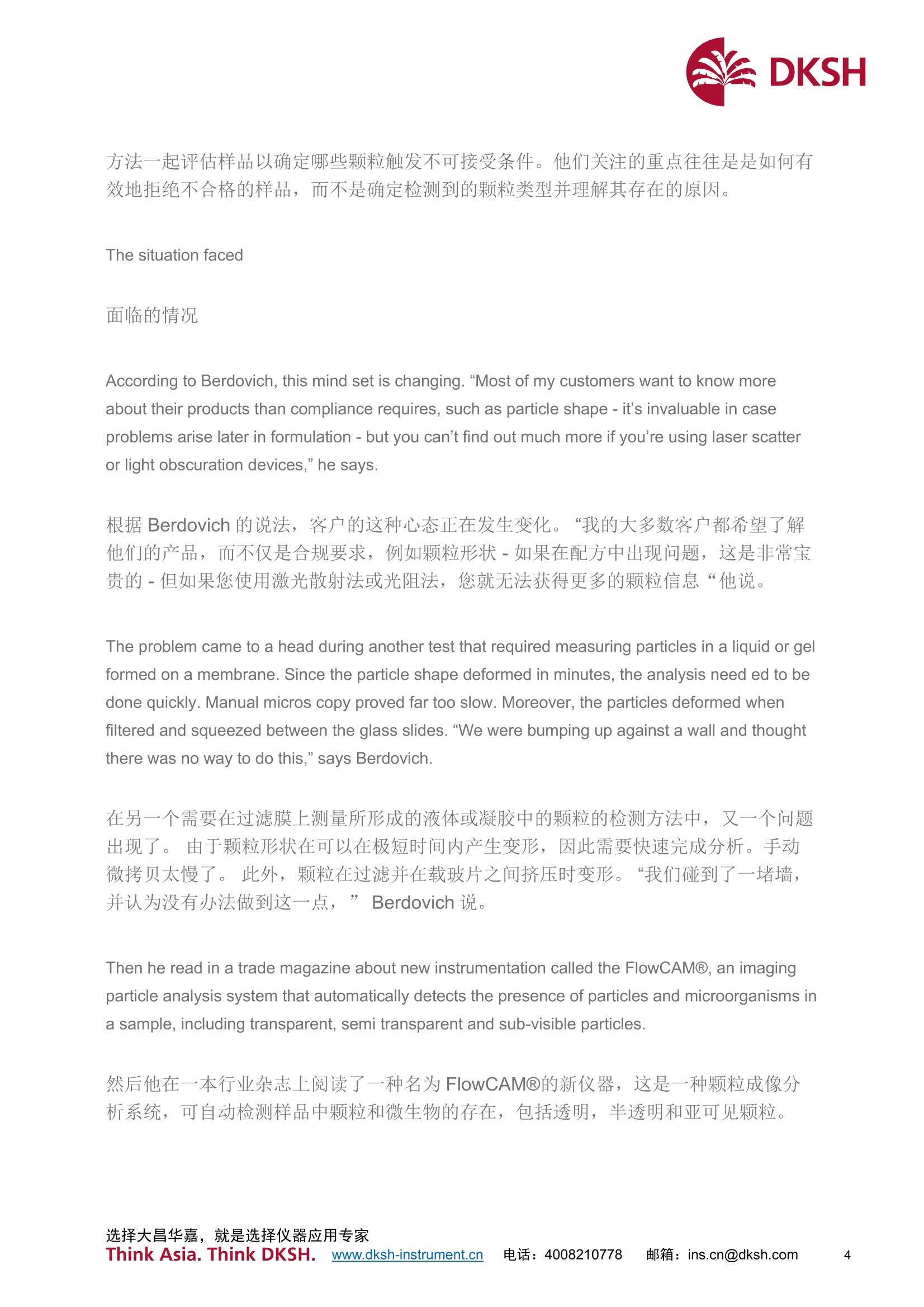
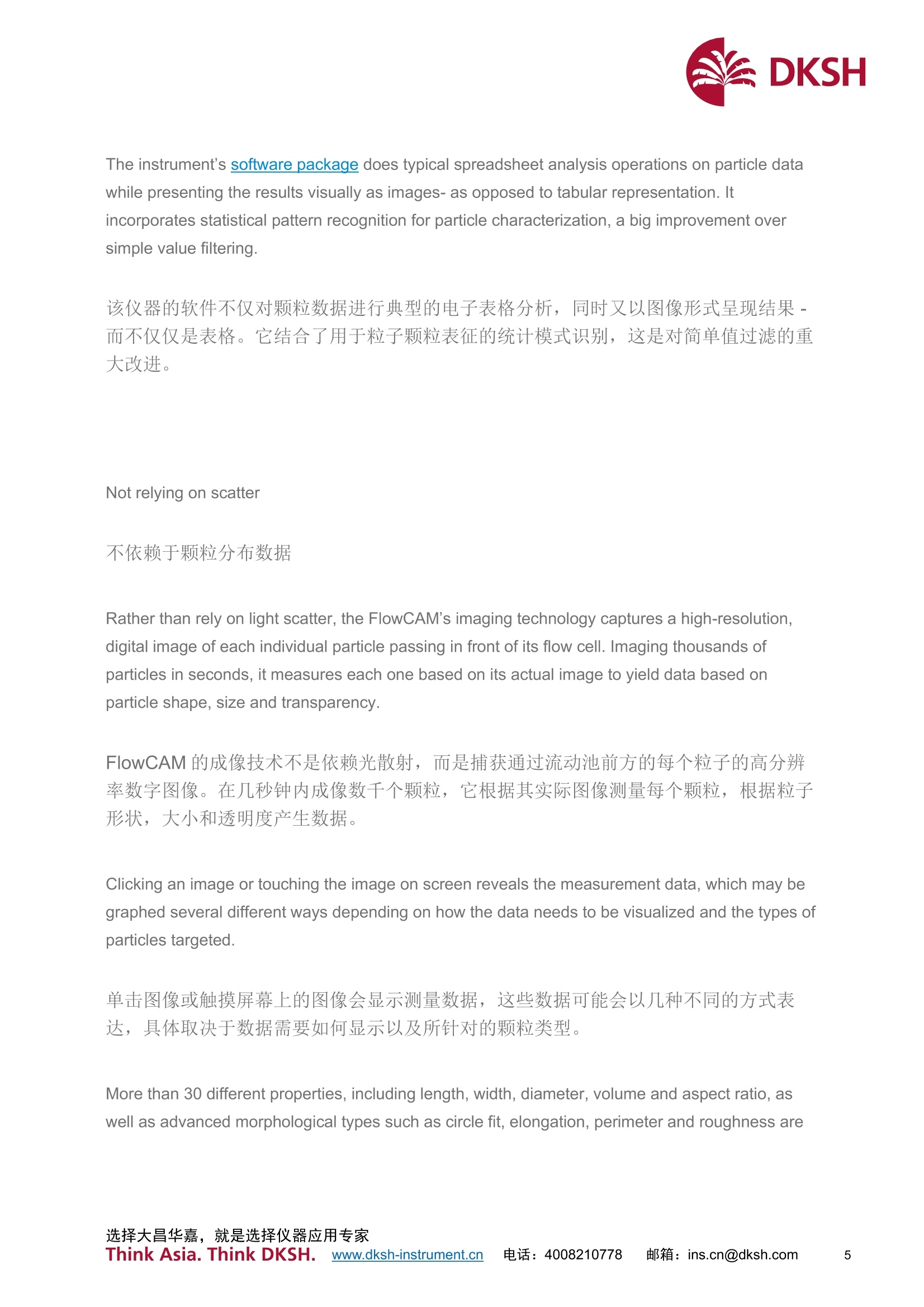


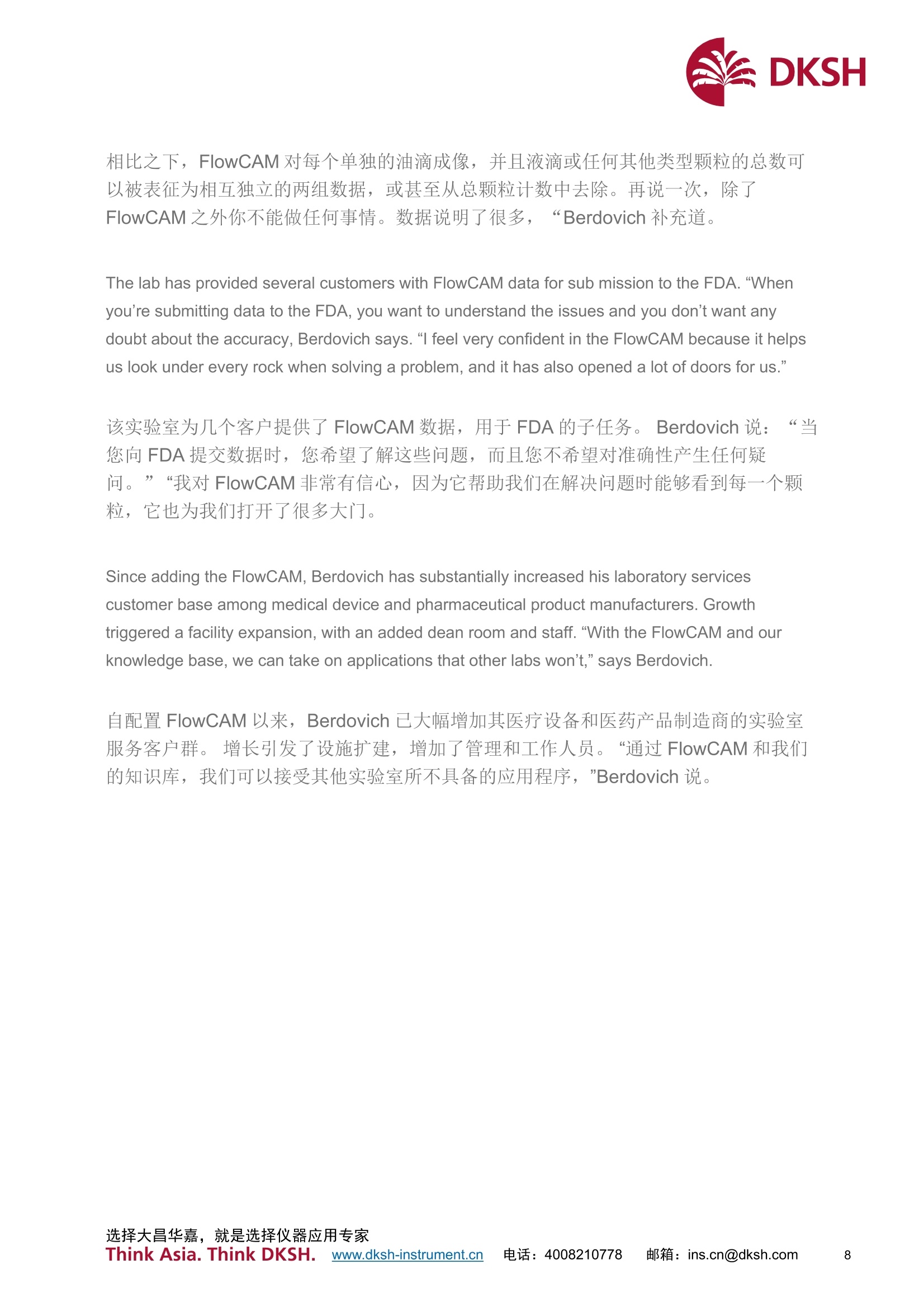

还剩7页未读,是否继续阅读?
大昌华嘉科学仪器为您提供《蛋白质聚集体中表征检测方案(图像粒度粒形)》,该方案主要用于其他中表征检测,参考标准--,《蛋白质聚集体中表征检测方案(图像粒度粒形)》用到的仪器有流式颗粒成像分析系统FlowCam®8100、纳米流式颗粒成像分析系统 FlowCam® Nano、颗粒成像法+光阻法分析系统 FlowCam® + LO
推荐专场
相关方案
更多
该厂商其他方案
更多









